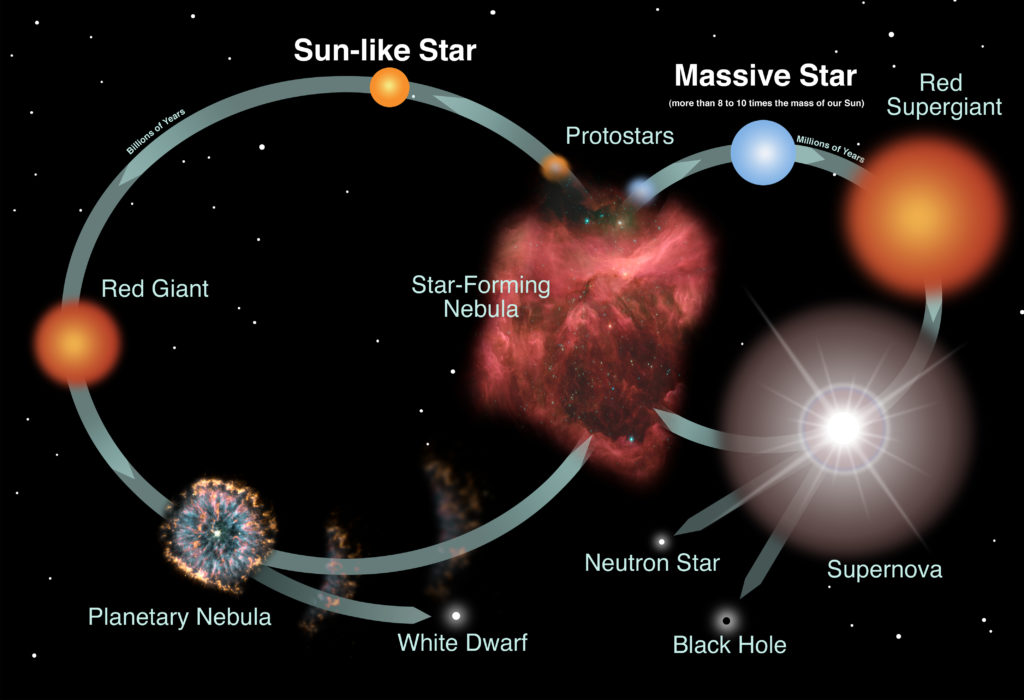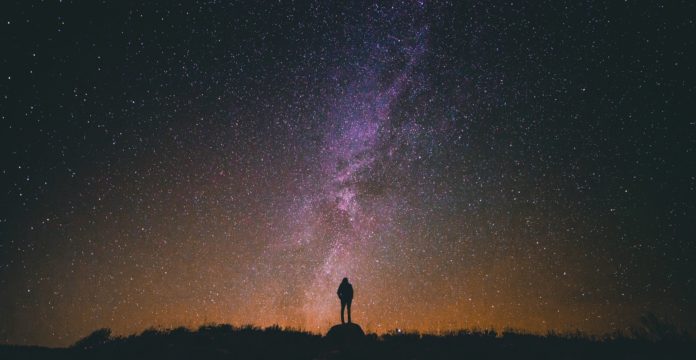The night sky is filled with stars, and as similar as they may seem, they can lead very different lives.
They each expand and collapse towards the ends of their lives, but some are larger and hotter, exploding into dazzling supernovae and eventually collapsing under their own mass into ultra-dense black holes. Others are smaller and cooler, and expand outwards into red giant stars before collapsing in on themselves to form tiny white dwarfs.

Until now, astronomers weren’t sure where exactly the boundary between these stellar classes lies. And while both low- and high-mass stars reach intermediate stages of evolution before collapsing, becoming red giant and red supergiant stars respectively, astronomers also weren’t sure whether stars could exist between these two ends of the spectrum.
Thanks to new research from the University of Toronto, however, we now have evidence that these in-between stars do exist — and by studying them in greater detail, we may be able to answer questions about why certain stars explode and how stars produce the elements that make up the rest of our Universe.
The research was led by Anna O’Grady, a PhD candidate in the David A. Dunlap Department of Astronomy & Astrophysics, and published in The Astrophysical Journal.
The missing link between low- and high-mass stars
“We’re not really sure what the dividing line is between low-mass stars like the Sun (which don’t explode) to high-mass stars (that do explode), so finding a population of these […] stars, which sit at a mass on the dividing line, is really exciting,” explained O’Grady in a press release.
To find these elusive in-between stars, O’Grady and her colleagues searched through observations of 1.5 million stars in the nearby Magellanic Cloud galaxies. Their data came from the the All-Sky Automated Survey for Supernovae, or ASAS-SN, which is a group of robotic telescopes that observes the entire sky every day.
Of these millions of stars, O’Grady eventually found 12 in particular that seemed unusual. The stars were about as bright as red supergiants (stars which do explode) but shared many other characteristics with red giants (stars which don’t explode), meaning they didn’t fit neatly into either stellar class.
Instead, O’Grady and her team believe that these 12 stars may be super asymptotic giant branch, or super-AGB, stars: the class of stars theorized to exist between low- and high-mass stars.
For astronomers, this discovery is particularly exciting. Our own Sun, for example, is a low-mass star that won’t result in a supernova explosion, but how close is it to this boundary? These super-AGB stars could shed light on the cutoff between stars that explode and stars that don’t, and help astronomers understand the exact mechanism that causes these explosions to occur.
We are all star stuff
O’Grady’s discovery also has important implications for the rest of the Universe. Most of the heavy elements in the Universe — materials like oxygen, iron, and gold — are formed in different types of stars, and spread throughout the Universe as these stars die. High-mass stars are able to form heavier elements than low-mass stars, but the exact breakdown between the two isn’t fully understood.
“If you can understand at what mass a star explodes,” O’Grady explained, “you can also get closer to understanding the amount of heavy elements you expect to see in the Universe.”

Going forward, O’Grady and her colleagues will study the compositions of these super-AGB stars to learn more about which types of elements they contain.
If their compositions are closer to those of high-mass stars, we would expect to see a higher fraction of heavy elements throughout the Universe. And given that many of these heavy elements are important building blocks for life on Earth, this could have implications for how often life like us might be expected to form throughout the Universe.
It could also give us a deeper understanding of how life first formed on our own planet Earth.
As astronomer and science educator Carl Sagan once put it, we are all star stuff — and O’Grady’s discovery brings us one step closer to understanding where exactly this star stuff comes from.









































